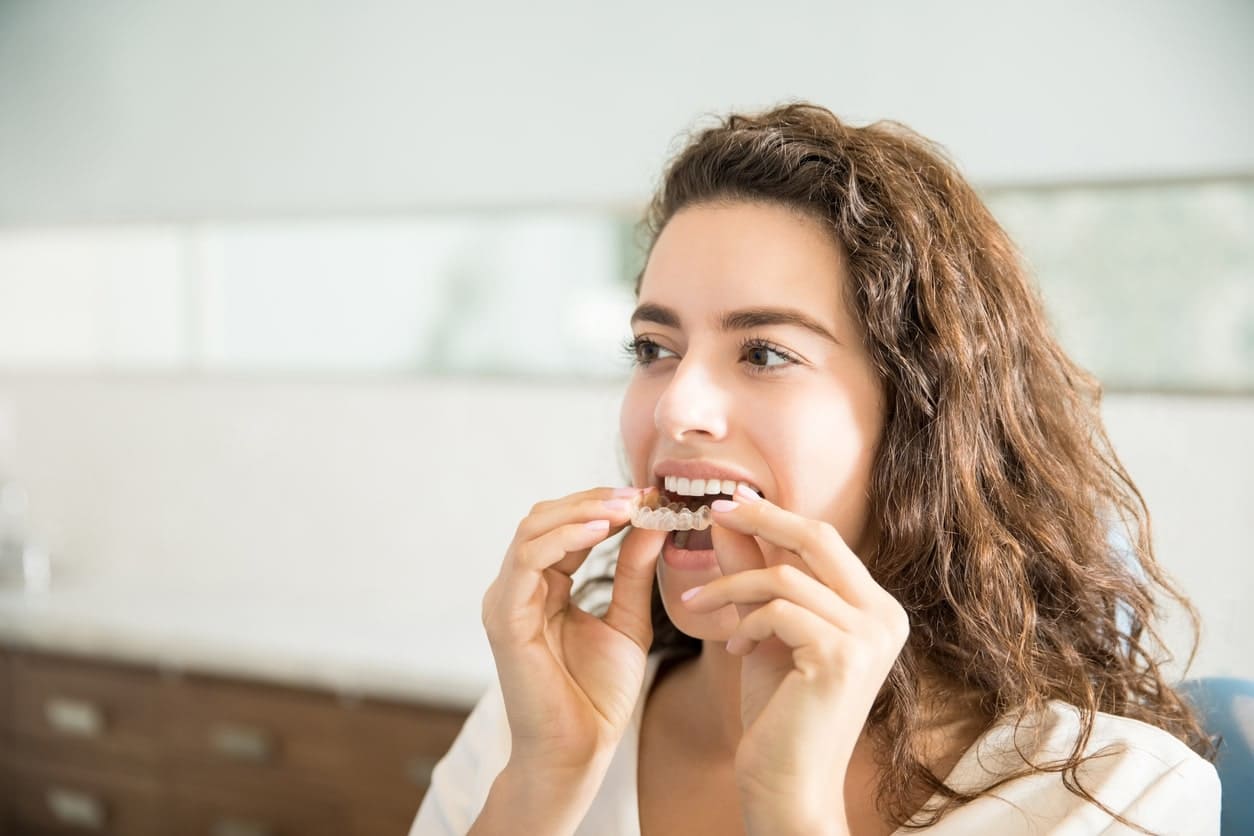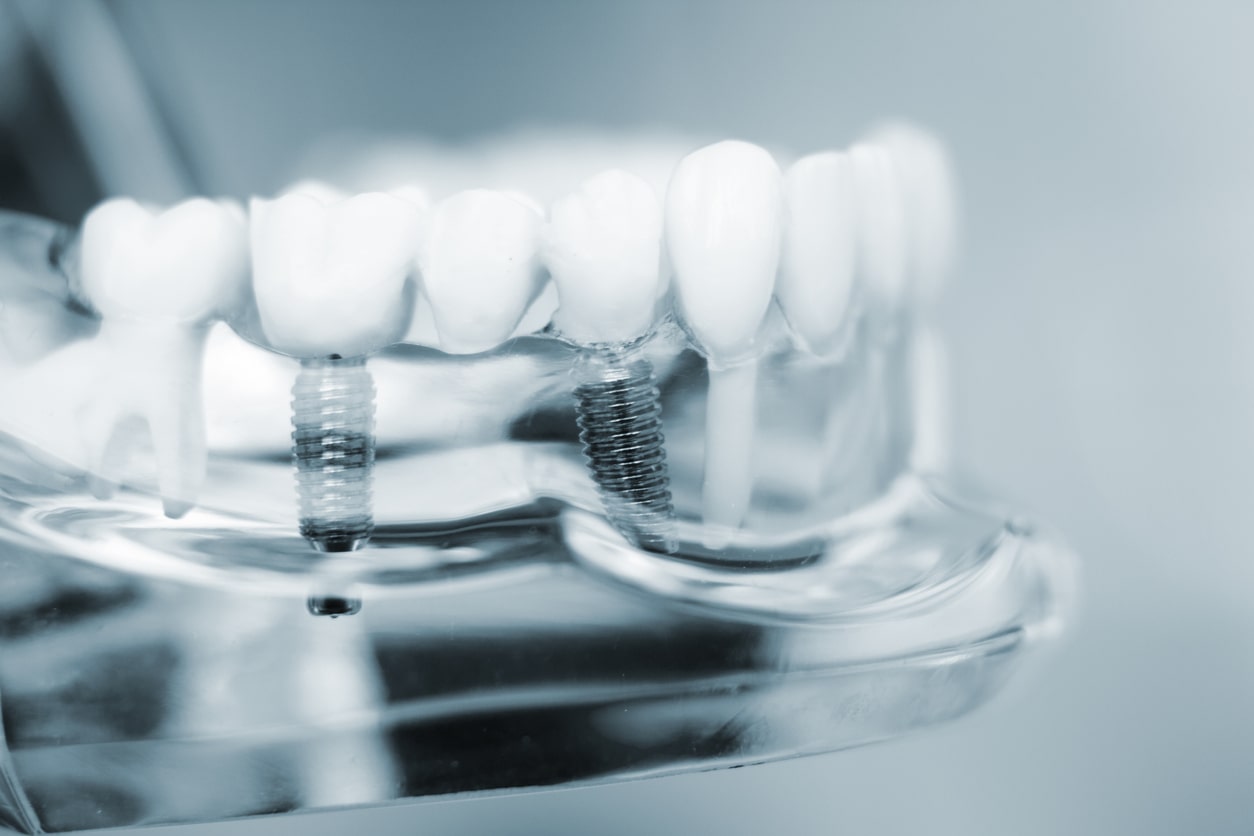From a very early age you’re taught to brush your teeth twice a day. Typically, this occurs when you wake up and when you go to bed. This can seem like a mundane task to accomplish but the reward of having clean teeth is exponential.
Having a good dental routine rewards you with:
Fresh breath
No tooth pain
Little to no cavities
Healthy gums
That clean, minty feeling
A survey conducted finds nearly 70% of Americans brush their teeth twice a day leaving 30% that don’t brush enough. Is it boredom? Forgetfulness? Too much going on?
Here are 6 ways to boost your dental routine to keep you motivated and flossing away.
1. Revamp the old and bring in the new
People love shopping. And what better way to get excited about brushing your teeth than to purchase a new toothbrush! Those fresh out-of-the-box bristles will energize you to brush more. Package your purchase with floss and new mouthwash too.
Toothbrush
Have you thought about using an electric toothbrush? The battery-powered toothbrush knocks away bad bacteria with ease and prevents gum erosion. If electric isn’t your thing, feel the love with a soft bristle toothbrush. Your teeth will bathe in delight.
Floss
Don’t settle for the floss your dentist provides—buy floss you’ll actually use. Did you know some floss is designed to fit small spaces? Look for floss that is waxed that eases the floss in-between your teeth for ultimate comfort. Try the mint flavor!
Mouthwash
Purchasing mouthwash is an added reminder to go further with your dental routine. And even though mouthwash doesn’t replace brushing and flossing, it does give you a quick option if you’re running late to get some fluoride on your teeth. Just remember to not eat or drink anything for 30 minutes after use to get the most out it.
2. Purchase additional tools you haven’t thought of
Besides the typical toothbrush and floss, how about a water flosser? Water flossers add a new sense for your teeth as water is pummeled in-between your teeth to dislodge particles. Another floss-like tool is a dental pick. Dental picks or mini brushes may provide better control to get in-between your teeth. Tongue scrapers are also an effective tool that helps wash away the bacteria that gives you bad breath. Purchase these tools for a more robust dental care routine.
3. Take an active break with mindfulness
Do you find yourself rushing and not having the time to brush your teeth? Combine this activity with mindfulness. Mindfulness is the practice of gathering your thoughts with your breath and relaxing. When you use mindfulness while brushing, you’ll feel more energized and refreshed when you’re finished. This will create positive feelings, and you may even find yourself looking forward to brushing.
If flossing doesn’t do it for you because you just don’t have the time, mindfulness will help keep your focus on the task at hand. Imagine, taking your time, flossing between each tooth, dislodging all the crud, taking a breath, listening to the water as it hits your toothbrush, feeling the bristles glide over your teeth and finally enjoying that fresh, crisp feeling your mouth will feel when you’re complete.
4. Drink more water with acidic drinks
Outside of brushing and flossing, there are other techniques to utilize. Acidic drinks weaken your tooth enamel. So before drinking acidic beverages such as orange juice or coffee, take a sip of water. This prevents the acidity from directly attacking your teeth. In the same light, avoid brushing your teeth after you drink acidic beverages.
5. Eat foods that help
Crunchy fruits and vegetables such as broccoli, kale, apples and pears act as natural brushing and flossing agents as they dislodge particles from your teeth. Your saliva then acts as an important natural tool your body uses to wash away unwanted bacteria. If you leave for work or school without brushing, don’t worry! Simply grab some crunchy fruits and vegetables to help you through.
6. Teeth whitening
Teeth whitening is cosmetic mainly and not for health. That said, people typically take the care necessary to brush their teeth before using the whitening strips, which is how whitening lands on this list. You should always brush your teeth before using whitening strips to avoid getting trapped bacteria between the strips and your teeth. However, it is recommended for sensitivity purposes not to brush your teeth immediately before using the strips. Wait at least half an hour. Also, always consult your dentist prior for the proper way to use whitening strips.
Dental insurance gets you into the dentist for a more thorough cleaning
There are some things your dental routine at home cannot accomplish without a dental professional. This occurs when bad bacteria hardens to form plaque that brushing cannot wash away. This is performed by a dentist or a dental hygienist by scraping your teeth. This is essential for your complete oral care because these bacteria form cavities; cavities turn into root canals and eventually, in extreme cases, tooth loss.
Dental insurance helps get you into the dentist for these cleanings and checkups. The Direct Benefits Marketplace puts the top dental plans side-by-side for you to choose which plan works best for your situation and lifestyle. Choose the Direct Benefits Marketplace for your dental solution.
DENTAL BLOG
Stress comes and goes with everyday life, and it can be difficult to know when stress is physically harming you. Stress affects mood, behavior, overall health and even your way of thinking. One result of stress is teeth grinding.
Teeth grinding, also called bruxism, mostly occurs unconsciously while you’re awake or while sleeping. Up to one-third of adults grind their teeth during the day and more than 1 in 10 at night.
These numbers have increased since the start of the pandemic. Pandemic-related anxiety has led to an increase in tooth fractures due to teeth grinding. Dentist Laura Philip says she’s seen more tooth fractures in six weeks than in the previous six years.
Identifying the signs of grinding becomes essential not only for teeth health but also a way for you to know when your stress is causing issues.
How do you know when you’re grinding your teeth?
Identifying teeth grinding yourself is difficult to do. After all, if this is happening unconsciously, how can you tell? A common response dentists hear from their patients is, “I never grind my teeth.” But dentists can see a different story. Here are some symptoms to identify yourself:
Headaches
Sleep issues
Sore jaw
Chipped teeth
Abnormal bite
If you do find yourself with these symptoms, visiting a dental professional will help clarify your issue. Dentists check your teeth for cracks, chips, loose teeth and excessive wear.
What are the effects of teeth grinding?
Catching teeth grinding early is essential to preventing further teeth complications. As grinding continues, teeth begin to wear away. Your once enamel-protected tooth becomes worn down, and dental procedures will be needed to protect it from disease. These include bridges, crowns and root canals. If the grinding becomes so severe, tooth loss could be a result. You’ll then need implants or partial dentures.
Other potential problems occur with the jaw and muscles in your face. Temporomandibular (TMD) is a disorder that causes a clicking or popping sound when the mouth opens and closes. Difficulty in chewing or an uncomfortable bite ensues.
What you can do to prevent teeth grinding
If you find yourself grinding your teeth, the good news is you can prevent it. Here are some ways to accomplish this:
Manage your stress. It’s easy to forget about stress because when you’re stressed, it’s difficult to slow down. Set scheduled breaks throughout the day to remind yourself to relax. Take some deep breaths and grab a drink of water. Eating healthy and exercise helps regulate your stress as well. Even try mindfulness while brushing your teeth.
Work on better posture when sitting. When you lean forward while sitting with bad posture regularly, this puts excessive strain on muscles and joints in the head, neck, shoulders and jaw. Posture exercises will help your body loosen up and thus help lower the risk of teeth grinding. Even taking a break to stand and “wiggling” your body to loosen up can help.
Purchase a mouthguard to protect your teeth. Mouthguards are a tool in the toolbox to combat teeth grinding, but it won’t solve the issue. Your teeth are still grinding away. That said, mouthguards do help slow the wear and tear. There are different varieties available including over-the-counter mouthguards. But some over-the-counter mouthguards can make underlying conditions worse. It’s best to visit a dentist that can diagnose the issue and provide a custom-made mouthguard that fits your teeth.
Dental insurance gets you into the dentist
Stress or no stress, teeth grinding can happen to anyone. And as noted, you may not know it’s occurring. Dentists help you identify signs of teeth grinding and provide you with solutions to keep your teeth healthy—and dental insurance gets you into the dentist.
Dental insurance actively promotes preventive care with cleanings and exams typically covered 100% (depending on your plan) multiple times per year. This ensures your teeth stay strong. If you are in need of a dental procedure due to teeth grinding, dental insurance helps cover your out-of-pocket costs.
If you’re looking for the right dental insurance plan, the Direct Benefits Marketplace carries a variety of brands to give you more choice. Compare the best plans side-by-side and don’t be afraid to give us a call or use our chat feature on the website. We have experts standing by that love talking dental insurance and finding dental solutions for you.
As we assess our overall health, heart health typically springs to the top—and for good reason. The heart is the powerhouse of the body and pumps nutrients and oxygen throughout the day and through the night. What about teeth health? Did you ever think there could be a connection between your teeth and your heart?
Before we dive in to the connection, check out these heart facts from the CDC:
Heart disease is the leading cause of death for men and women in the U.S.
One person dies every 36 seconds in the United States from cardiovascular disease
Someone has a heart attack every 40 seconds
Coronary heart disease is the most common type of heart disease, killing 365,914 people in 2017
As you can see, the heart is a major concern for a lot of people across the U.S. We want the heart healthy, and dental health is in fact one major piece of the heart health strategy.
Oral health linked to heart health
There are many facets to complete heart health that you probably know well: exercise regularly, eat healthy, avoid smoking, drink alcohol in moderation, and manage your stress. Now add oral care to that list.
Numerous studies have shown a link between bad bacteria from the mouth entering the bloodstream and attaching to the heart that either causes inflammation or infection.
Just as the heart works hard, so does your mouth. Chewing and swallowing those nutrients you put into your body puts a lot of responsibility on your mouth to perform at a high level. Trouble arises when the mouth isn’t performing at a high level (cavities, missing teeth). Gum disease is a main contributor that affects heart health.
How does gum disease affect heart health?
Gum disease, or periodontal disease, occurs over a period of time when food particles are not washed away, and bad bacteria begins to form and build plaque. This creates a pocket that attacks your tissue and bone. Tooth loss is a result of severe periodontitis, and chronic inflammation may set in. This not only affects the immune system, but also the heart.
People that have gum disease are two to three times as likely to have a heart attack, stroke, or other serious cardiovascular events. The plaque that’s created is carried through the blood and builds up inside arteries. This fatty plaque that has formed is known as atherosclerosis and is the prime instigator of coronary artery disease.
How to avoid gum disease?
Gum disease is prevalent among Americans. 47.2% of adults aged 30 and older suffer from some form of gum disease.
What can you do to prevent gum disease?
Brush and floss twice a day
Use mouthwash as needed
Be mindful of what you put into your body (smoking, diet)
See your dentist regularly
You’ll see that the at-home dental care routine is essential to prevent gum disease. But seeing a dentist is also important. This is because once plaque is established, it can harden and form “tartar.” Unfortunately, tartar can not be removed by brushing and flossing at home. You must visit a dental professional such as a dentist or a dental hygienist to remove the tartar.
If you have severe gum disease, surgery may be needed to reverse the infection. If the disease gets too far along, compounding issues occur: tooth loss and bacteria moving to other areas of the body.
Dental insurance helps your teeth and your overall health
Dental insurance, unlike health insurance, puts emphasis on preventive care. Dental insurance ensures you get into the dentist for regular cleanings and checkups. Plus, Dentists not only check on your teeth and gums, but they can also diagnose diabetes, cancer, HIV, anemia and chronic kidney disease.
If you’re looking for dental insurance to help protect your teeth and your overall health, the Direct Benefits Marketplace makes it easy for you to choose the plan that works for you. With a variety of brands to choose from, your dental solution is here.
New year’s resolutions are a way for people to look back at the past year, reflect and make appropriate changes for the following year to better themselves. Some of the more common resolutions you may have said yourself might be to exercise more, eat healthier, learn a new skill or travel more. What about new year’s resolutions centered around dental health? Sound boring?
Well, did you know oral health is directly linked to overall health? In fact, oral health has been linked to the cause of these diseases and conditions:
Cardiovascular disease
Endocarditis
Stroke
Diabetes
Pneumonia
Pregnancy and birth complications
With improving your oral care as your new year’s resolution, you’re adding an additional layer of protection for your overall health that will allow you to be more productive and most importantly, healthy. So cheers to your oral care 2021 new year’s resolution and these 5 tips!
1. Revamp your dental care hygiene routine
We all know brushing and flossing on a regular basis is the foundation for good dental health. So why not treat yourself and purchase a toothbrush that will get you excited for brushing your teeth. Maybe you’re thinking about switching to an electric toothbrush, but it’s too expensive. Is there anything in your budget that you could cut out to replace the expense? According to the American Dental Association (ADA), electric toothbrushes clean better than manual toothbrushes. The pulsating action breaks up plaque and sweeps it away, something a manual toothbrush can’t do as effectively.
The same goes for flossing. If you don’t floss because you hate it, there are other options out there:
Dental pick
Water flossing
Interdental brushes
Tape floss
Investing in a floss option that will motivate you to floss more is a step in the right direction. And let’s admit it: brushing is so much easier than flossing. But bacteria gravitate to those places that are hard to reach and where food typically gets lodged and missed by your toothbrush. Flossing rids these particles and does not allow bacteria to build plaque.
2. Make your teeth dance with a deep cleaning twice a year
Your brushing and flossing routine is flawless, yet you still find a pain growing in your bottom molar. You head to the dentist and they say, you’ve got a cavity. But wait! I’ve done everything you’ve asked. Brush and floss daily and visit the dentist twice a year!
Two words: Streptococcus mutans
This little booger is the main contributor to tooth decay and breaking down your enamel. And dentists happen to be the best Streptococcus mutans hunter you’ll find (and dental hygienists). So get to your dentist and ensure those extra difficult places get cleaned by a professional.
3. Restore your teeth for ultimate strength
As mentioned above, sometimes no matter what you do, bacteria will prevail and cause your teeth some concern. But it doesn’t mean you failed and that’s the end of the line for your tooth. There are plenty of oral care techniques that stop corrosion and help keep your teeth strong and healthy.
Armor for tooth
Fillings are needed to fill a decayed tooth before further damage occurs. If a tooth has been left alone for too long, a crown will be needed. And bridges help keep crowns in place on multiple teeth.
Replacements for tooth
If a tooth needs replacing, a dental implant may be needed. Implants help maintain and strengthen bone structure, provide the ability to chew food and provides the confidence a smile can bring. Dentures are another option for replacing teeth in bad condition.
4. Be mindful of what you put into your body
For this section, you can throw in the kitchen sink with your new year’s resolutions: quit smoking, eat healthier, drink more water and limit sugary foods and drinks all suffice as oral care essentials. Even eating crunchy fruits and vegetables helps saliva production with your teeth—which helps wash away food debris. Combining these actions with a regular oral care routine will keep your teeth clean and healthy.
5. Saving and staying healthy with dental insurance
You’re only as strong as your weakest link. If you have a tooth that’s hurting, even though 97% of your teeth are still OK, that one tooth will still bring your spirits down. When your tooth hurts, a trip to the dentist is typically required. But, some people don’t make it to the dentist as:
59% say cost affects their decision
22% are afraid
19% cannot find a convenient location or appointment time
Dental insurance can help with these issues: 1) Dental insurance brings down the cost with network savings, coinsurance and annual maximum money that is yours to use throughout the year; 2) By choosing a dental insurance network that is expansive, your options will automatically multiply so you can find a dentist close to you that also saves you money; 3) And although dental insurance may not help with dental phobia itself, knowing that you have dental insurance that will save you money may help ease the anxiety you experience.
One place to get all the information you need plus purchasing dental insurance is the Direct Benefits Marketplace. We offer plans you can compare side-by-side, and a call center team that are licensed agents who don’t get paid on commission. They will provide superior guidance to help you in your decision of which dental insurance product is right for you and your family. Your dental solution is here!
Shopping for dental or vision insurance on your own can be daunting, especially if you come across terms that you aren’t familiar with. A couple of examples are maximums and deductibles. What do these terms mean, and how do they factor into your out-of-pocket costs?
What is a dental insurance deductible?
Here’s a basic insurance deductible definition: this is the amount of money that you’ll be required to pay annually before certain types of coverage will kick in.
As you work on calculating how much dental insurance will cost, remember to include the deductible along with the premium. However, unlike a premium, which is what you pay to be enrolled in a plan, a deductible is paid towards professional care in the dentist’s chair.
Here’s an example: if you sign up for a plan that has an annual $200 deductible, certain types of dental care won’t be covered by the insurance until you meet that deductible. How do you meet it? Well, whenever you see your dentist for treatments that aren’t immediately covered, you’ll need to pay for them out-of-pocket. But, once you spend the $200, your insurance will take over and help pay for future treatments.
Note: Once a new year starts on your plan, your deductible will reset.
How do insurance deductibles work if you have a family dental plan?
If you’re planning on signing up for a policy that will cover your whole family, read the details to learn about the deductible. You’ll likely find that there’s an individual deductible, along with a family deductible. It’s a little more complicated, but once you get the hang of things, it’ll make sense.
As individual members of your family receive dental care, and pay towards their individual deductibles, that money will also be applied to the family deductible. Then, once the family deductible is reached, deductibles will no longer apply for anyone, and your insurance will provide the additional coverage.
Here’s an example: if your household of four has a family deductible of $200 and an individual deductible of $100, if two members of the household meet their individual deductibles, the family deductible will also be met.
Remember: Before the family deductible is met, if an individual deductible is fulfilled, that person will receive the additional coverage, while other members will still need to pay towards their individual deductibles. However, once the family deductible is met, everyone in the family, regardless of whether or not they met their individual deductibles, will reap the benefits of the extra coverage.
Does all dental work count towards the deductible?
The answer to this question depends on the plan that you sign up for.
With some plans, you might be able to receive certain types of care by paying a copay at each visit, without needing to worry about a deductible. Also, many plans will cover preventive care at 100%. On the other hand, you might find that restorative treatments, such as crowns, will only be covered after you’ve met the deductible.
Knowing which out-of-pocket payments count towards the deductible will give you a better idea of how much you’ll need to budget. For example, if you need a treatment within a category of care that comes with a copay, it may or may not count towards the deductible.
Are there plans with no dental insurance deductible?
Yes, you might be able to find plans that don’t have a deductible! A DHMO may not have a deductible to worry about, while a DPPO usually has one.
Deductibles vary from one plan to the next as well, so you can search for policies that have the lowest deductibles if that’s what you’d prefer.
What is a dental annual maximum?
A dental insurance annual maximum refers to the amount of money that the provider will pay in a year to help cover the cost of care you receive. This, too, will vary from one plan to the next.
If you’re the type of person who typically needs a lot of expensive care, opting for a plan with a higher annual maximum can help you save more money.
Example: a plan that has an annual maximum of $5,000 will pay out that much money before you’ll be responsible for any additional treatments you need.
Once your plan renews at the start of a new year of coverage, the annual maximum will be reset.
What should you do when you max out your dental insurance?
The good news is that many people don’t end up hitting the annual max on their dental plans. However, if you do, you’ll be responsible for any care you receive from that point forward, until the plan renews the following year.
If you’re concerned about being able to pay for care totally out-of-pocket, talk to your dentist. You might be able to hold off on receiving treatment until your plan renews and the annual maximum resets. Or, you might be able to schedule treatments in a way that will help you avoid hitting the annual max.
Does vision insurance have a deductible?
In many cases, you won’t need to worry about a vision insurance deductible. Most plans don’t include this cost. However, you may have other expenses, such as copays, and there might be an annual maximum too.
Use the Direct Benefits Marketplace to shop for dental and vision plans
Looking at all of the details that make dental and vision plans unique can be tedious. That’s why the Direct Benefits Marketplace makes it simple to browse and compare policies, whether you’re searching for dental insurance with no waiting period and no maximum or vision insurance with no deductible.
Oral cancer can occur in the mouth or throat, such as on the cheeks, gums, tongue, lips, roof of the mouth, or base of the mouth. A person can be diagnosed with this cancer at any age, but the risk tends to increase as you get older. And the risk is also higher if you drink heavily or if you’re a smoker.
Once it starts to grow, it can spread, so it’s wise to check your mouth at home for oral cancer signs, as well as have your whole mouth examined by a dentist. This strategy can help boost the odds that you’ll recognize the earliest signs of this disease so you can receive treatment sooner.
Continue reading to learn more about the early signs of oral cancer, and how your dentist can help.
What does oral cancer look and feel like?
It’s a good idea to become familiar with some of the main symptoms that are associated with oral cancer so you can keep an eye out for them.
This type of cancer can provide some warning signs, so if you notice something is wrong, visiting a doctor or dentist right away can help you get a proper diagnosis, as well as start treatment immediately, if necessary.
Here are some of the things to look out for as you check the inside of your mouth in the mirror at home:
A red or white patch or spot that is painless and flat
Thickening of the skin
A lump or swelling
Rough or crusted spots
Bleeding in the mouth or throat
A sore that isn’t healing and bleeds easily
Tenderness, pain, or numbness that develops in the lips or mouth
Other symptoms that might occur include:
Sore jaw
Sore throat
Earache
Hoarseness
Loose teeth
A change in your bite
Trouble chewing, speaking, swallowing, or moving the jaw or tongue
Note: Some experts recommend waiting about two weeks to see if the symptoms resolve on their own. But if you feel like you need to see a dentist or doctor sooner, definitely do so.
Is oral cancer curable?
It is possible to treat oral cancer, and be cured, especially if you catch it in time. The goal is to become aware of the problem in its earliest stages before it has had a chance to spread.
Oral cancer treatment options might include surgery, radiation and chemotherapy. Remember, the sooner you can receive treatment, the better!
How is oral cancer detected early?
To look for oral cancer signs, try to check the inside of your mouth regularly, and don’t forget to examine your lips as well. By doing so, you can become familiar with what your mouth looks like, and that knowledge will help you keep track of what’s normal and what’s abnormal for you.
In addition to checking your mouth at home, seeing your dentist on a regular basis, such as twice a year, is a smart move because dental professionals know how to carefully examine your mouth for indications that something is wrong. They are trained to look for early oral cancer on gums, the tongue, and other areas of the mouth.
At your routine dental check-up, it’s also best to discuss any symptoms that you’ve experienced, or anything that you noticed in your mouth that doesn’t appear normal to you. Be upfront, as there’s no need to feel embarrassed!
In the event that your dentist finds something that may be cancerous, he or she might take a sample of cells from your mouth, or you might be referred to a specialist for further evaluation and a biopsy.
Can dental Insurance help?
Because your dentist can perform an oral cancer screening at a check-up, yes, dental insurance can certainly come in handy! Preventive care that includes check-ups and screenings is usually covered at 100%, so you can save a lot of money, and you won’t need to sacrifice seeing the dentist often.
Being able to afford dental care is so important because simply seeing the dentist can make a big difference when it comes to catching problems as early on as possible. Plus, your dental insurance, along with your medical insurance, might step in to support you financially if you’re ever diagnosed with oral cancer and need to undergo treatment. This can be especially helpful for seniors on a fixed budget.
Bottom line: going to the dentist is about more than just keeping your teeth and gums in tip-top shape; it can also help catch oral cancer before it’s too late! So, if you don’t already have insurance that can help make appointments more affordable, consider browsing the many plans on the Direct Benefits Marketplace to get started.
How Long Can You Stay on Your Parents’ Insurance?
Many people over the age of 18 remain on their parents’ insurance plans. But how long can you stay on your parents’ insurance before you’ll be required to get your own plan? To help clear things up, we’ve compiled a list of FAQs about this topic.
How Long Can I Stay on My Parents’ Dental Insurance?
Being able to stay on your parents’ plan means you can reap the benefits of their insurance policy for quite a few years after you’ve graduated high school or college. And this can be really helpful if you have trouble finding a job that offers these benefits, if you have a job but don’t receive dental benefits, or if you would struggle to afford going on your own dental plan.
But, when it comes to how long you can stay on their plan, the answer isn’t so simple. Some dental insurance providers might allow you to stay on your parents’ plan until you turn 26. This is the same age limit set by the Affordable Care Act (ACA) for health insurance. The problem, though, is that the ACA didn’t set the same rule for dental insurance. Therefore, not all providers let you stay on your parents’ plan that long.
So, how long can children stay on parents’ insurance? Well, the answer may vary from one provider to the next, and it might also vary by state. For example, you might not be eligible once you turn 19, especially if you were on a health plan that provided pediatric dental services.
Do I Have to Be a Full-Time Student to Stay on My Parents’ Insurance? And Can I Stay on Their Plan If I Have a Job?
Regardless of whether you’re single, married, working, unemployed, or going to school, you should be able to receive the dental coverage you need if your parents keep you on their family plan, as long as the insurance provider allows this level of coverage.
Remember, not all plans have the same age restrictions. So, it’s necessary to check the details of your parents’ policy to determine when you’ll no longer be able to stay on it.
Can I Stay on My Parents’ Insurance After 26?
If your parents do have a dental insurance plan that provides coverage to dependents until they turn 26, you’ll be able to receive coverage until your 26th birthday. After that, you will need to sign up for a plan of your own. Thankfully, there are a lot of surprisingly affordable options available, so you don’t need to stress.
How Do I Shop for My Own Dental Insurance Plan?
Having dental insurance as an adult is certainly beneficial. Your teeth change as you age, and it’s just as important as ever to maintain a great oral hygiene routine, while also seeing your dentist regularly for checkups and cleanings.
Sure, being on your parents’ policy can be convenient because you don’t have to worry about gaps in coverage, you might be able to save money, and you don’t need to fret about any changes to what you’re used to. But there are a lot of comprehensive plans out there, so if you start your search, you might realize that you can actually get an even better policy than the one that your parents have!
When you’re ready to shop for dental insurance, check out the Direct Benefits Marketplace, where you can browse the plans that are available in your area. Compare the policies, and then select the one that meets your needs best. Once enrolled, you’ll be able to continue seeing your dentist while saving money, and you’ll be able to say you did it all by yourself!
When you’re self-employed, you’re used to making big decisions for yourself, especially when it comes to your dental and vision insurance because an employer isn’t there to cover those benefits for you.
Although it might be a little scary to think about the costs of buying insurance for yourself and your family, the great news is that there are a lot of affordable choices available for people just like you. When it comes to dental and vision insurance options, you don’t need to miss out, and you don’t need to break the bank to get the coverage you want.
To tackle this important topic, we’ve compiled a list of frequently asked questions surrounding self-employed insurance. Check out the information below to see how easy it is to make sure you’ll be able to maintain your oral and vision health.
Can I Buy Dental Insurance on My Own?
Absolutely! Self-employed insurance plans are available to entrepreneurs and those who run their own businesses, as well as those who work as freelancers or independent contractors. You don’t need to be traditionally employed to get high-quality, comprehensive coverage!
In fact, when searching for dental and vision insurance for self-employed individuals, you’ll likely realize that you can get similar plans to those that employers can buy for their employees.
Does Self-Employed Health Insurance include Dental?
As you shop for health insurance, you might find plans that include dental coverage. This may be a convenient option if you want to get everything from a single provider, with one premium to pay each month. Just be sure to read the details so you’re aware of any limitations.
Alternatively, you can search for separate dental insurance plans that don’t come as part of your health insurance package. You might discover that a standalone dental plan provides you with the level of coverage that you prefer, at a price you can afford.
What Is the Best Insurance for Self-Employed Workers?
The best insurance for individuals who are self-employed is one that’s affordable and comprehensive. Here are a few things to keep in mind while you look at the options that are available:
Self-employed dental insurance plans
There are different types of dental insurance plans, such as HMOs, PPOs, and indemnity plans. Each
has its own pros and cons to consider. For example, compared to an HMO, you might have more
freedom to use a dentist that’s out-of-network with a PPO, but you may not get the same
amount of support as you would if you went to an in-network provider. On the other hand, with an
indemnity plan, you might be able to choose any dentist you want, and the insurer will cover a
percentage of the cost.
With dental insurance, there are different categories of care that you can receive. These are known
as preventive care, basic procedures, and major services. Coverage for each category will vary from one
plan to another. For example, an insurer might cover 100% of preventive care, 70% of basic procedures, and 50% of major services, and you’d be
responsible for anything that the insurer doesn’t cover.
If you have a particular dentist that you want to continue using, it’s wise to search for a plan they accept. It’s also a good idea to check if you’d need to get a referral to see a specialist.
Dental insurance plans typically come with various out-of-pocket costs, such as a monthly premium, co-pay, deductible, and coinsurance. And there may also be an annual maximum that dictates how much the insurer is willing to spend each year to help you get the care you need.
Self-employed vision insurance plans
As is the case with dental plans, a vision plan will come with out-of-pocket costs, such as a monthly premium, deductible, copay, and coinsurance, and there might also be limits on the amount of support you can receive annually.
Vision plans might have limits on the types of coverage that they provide for things like exams, glasses and contacts, and laser vision correction procedures.
It’s a great idea to see if there are limits in coverage if you see an out-of-network provider, or if you need a referral to see a specialist. If there’s an eye care professional that you want to continue using, consider enrolling in one of the plans that they accept.
Is Dental Insurance Deductible for Self-Employed People?
Are dental insurance premiums deductible for self-employed individuals? Yes, in the same way that you may be able to deduct the costs of health insurance and medical care, you might be able to take advantage of a self-employed dental insurance deduction and/or vision insurance deduction come tax time. Plus, you might be able to deduct some of the out-of-pocket costs that you incurred throughout the year when receiving dental and vision care.
Discuss this with your accountant or a tax expert for personalized guidance, as that is the best way to determine if you qualify for these types of deductions, which might help you save money.
Start Shopping for the Best Insurance for Self-Employed Pros!
It’s extremely important to take great care of your teeth and gums, as well as your eyes and vision. But dental and vision costs can quickly add up when you’re paying for them completely out-of-pocket, Thankfully, there are low-cost vision plans, as well as affordable dental insurance plans for self-employed people.
When it comes to getting self-employed dental insurance, or vision insurance for self-employed professionals, the process is straightforward. You can use resources like the Direct Benefits Marketplace to browse the many options that are available in your area, and you can compare plans to see which ones suit your needs, preferences, and budget best. Then, once you’ve made a decision, you can enroll quickly and easily, at any time of year, and start reaping the benefits of your coverage before you know it.
Kids of all ages can end up with cavities and gum problems if their teeth and gums aren’t taken care of properly. That’s why, in addition to teaching your children about the importance of brushing and flossing, it’s necessary to take them to the dentist regularly so they can receive professional level care.
If you’re like a lot of parents, you might be concerned about the cost of high-quality dental care for kids, but dental insurance can help you afford every visit without breaking the bank. That’s right: in the same way that adults benefit from having dental coverage, kids can too!
To better understand the perks of signing up for dental insurance for kids, check out the FAQs below.
Does Health Insurance Cover Kids Dental Care?
Under the Affordable Care Act (ACA), dental care for individuals up to 18 years of age is considered essential, so insurance companies have to offer dental insurance for kids. However, buying this type of insurance is optional, so you won’t get hit with a penalty if you don’t have pediatric dental insurance. Also, in most states, you won’t be required to have this insurance, but check your local laws to be sure.
If you do want to get this insurance for your kids, you can get coverage that comes as part of a medical plan, or you can decide to purchase a standalone plan that’s separate from your medical insurance policy. It’s important to compare the level of coverage offered by both of these options. You might discover that a standalone dental plan is more comprehensive.
Do Kids Need Dental Insurance?
Maintaining dental health for kids is extremely important. Therefore, having dental insurance can be helpful, especially when it comes to affording expensive checkups, treatments, and orthodontics.
Dental insurance can be there to help cover the cost of the following:
• Exams
• X-rays
• Cleanings
• Preventive care
• Treatment for cavities and early childhood caries
• Emergency treatment of injuries and damage caused by accidents
• Fluoride treatments
• Orthodontics for aligning teeth and fixing bite problems
When Should I Get Dental Coverage for My Child?
By now, you might be wondering if you need to go ahead and get dental insurance for a baby or toddler. And you might be thinking about what’s covered under pediatric dental insurance.
When do kids need dental insurance? Well, you can get coverage for your baby so they can visit the dentist by the time their first tooth grows in. Plus, getting this type of insurance so early on in a child’s life can be a smart move because the dentist will keep an eye on their mouth as it grows, and will also be able to identify the earliest signs of problems that need to be treated promptly.
Whether your children end up with cavities in their baby teeth, your dentist realizes that they would benefit from orthodontics, or anything in between, having the right insurance can give you peace of mind. You’ll receive support that can help you afford all of the appointments and treatments necessary to maintain your kids’ oral health.
Getting Dental Insurance for Kids Is Easy!
Shopping for dental insurance that will cover your children is simple, especially if you’re already accustomed to buying insurance for yourself and your family.
You can start by comparing plans on the Direct Benefits Marketplace. Consider how much you can afford in out-of-pocket costs, the level of coverage that you’d prefer, and the dental professionals that you want to continue using.
Once you’ve found the right plan, you can sign up quickly and easily. Then, you can start taking your kids to the dentist without always worrying about how much it’s going to cost.
Open enrollment begins for millions of people across the country. Open enrollment allows people to purchase new health care plans or change their current coverage. There is a set enrollment period, and for most people this year, it’s November 1 through December 15.
Dental insurance can be purchased at any time of year, but for a lot of people, open enrollment puts dental insurance top-of-mind as they’re researching the options that are available to them.
Dental insurance, for the most part, act as health care plans do. Let’s look into some important terms to gain a better understanding as you’re looking for dental insurance.
Deductible
A deductible is the total amount you pay before the dental benefits carrier begins to pay for dental treatment costs. Once your deductible is met, insurance kicks in to help cover the costs. These deductibles can range from $25 annually to a one-time lifetime $100 deductible, and some plans don’t require a deductible at all.
Preventive, Basic & Major Coverage
Once your deductible is taken care of, you can now look at dental insurance to cover three main categories: Preventive, Basic & Major. Preventive is typically covered at or near 100 percent. From there, basic and major coverages will vary per plan. We get into this with coinsurance below, but let’s take a look at what these three categories cover:
• Preventive coverage typically includes exams, cleanings, sealants and fluoride treatments.
• Basic coverage might include things like fillings, gum treatments, root canals and extractions.
• Major coverage usually includes bridges, implants and dentures.
Coinsurance
Now that we’ve defined the three major categories dental insurance covers, let’s dive into how coinsurance aligns with them. Coinsurance is the cost that you and the benefits carrier share. We mentioned above that preventive is usually covered at 100 percent. For basic coverages, you can expect to pay around 20 percent of the cost. For major services, you can expect to pay around 50 percent of the cost.
Some plans offer graduating percentages that increase by the year. Also called loyalty benefits, one such plan may cover 50 percent of the cost in the first year and increase to 65 percent the second year and 80 percent by the third year. Assessing your situation and what dental work you may need in the future will play a large part in which dental insurance you choose.
Annual Maximum
The annual maximum your plan offers is the amount your carrier will pay per year. Unlike health insurance, for dental, once your maximum is met, the rest of the cost will be up to you to cover. If you’re planning for dental work in the future, here are some things to take into consideration to help lower the cost:
• Are you visiting in-network dentists to receive lower rates?
• Does your coinsurance increase the following year?
• Does your annual max increase as well?
People rarely hit their annual max unless they’re in need of major dental work. Finding the right plan that fits your time schedule is essential for getting the most value.
Waiting periods
Most dental insurance plans require a waiting period for basic and major work. But some do not. When accidents happen, or pain hits from out of nowhere, some insurance plans offer no waiting periods for you to get in and get the work done that gets you on your way faster. Most of preventive care is taken care of right away. For basic and major procedures, research which plan fits with your needs.
Looking for an easy way to shop? Check out Direct Benefits Marketplace!
The Direct Benefits Marketplace makes it easy to compare dental insurance plans to ensure you pick the right one for you and your family. You can compare different policies side-by-side to clearly see what they have to offer, and you can get a better picture of what your out-of-pocket costs will be based on the level of coverage that’s provided by each insurer.
Have questions? Our consumer advisors are standing by to answer the short questions and the long questions. They’re here to provide you with ultimate service and guidance.
Some call it a journey. Some call it a chore. Some don’t think anything of it at all. Whatever you consider it, preventive dental care helps keep your teeth and gums healthy and lessens the risk for future oral issues.
Ever since you were little, you've been told to brush your teeth before going to bed. Little did you know then, this little routine would become the basis for your dental health as you grew older.
What’s at stake?
Our mouth is full of bacteria. Some good and some bad. The primary culprit of tooth decay and periodontal (gum) disease that we’re worried about is the result of bacterial plaque: a thin film that forms on tooth surfaces from food particles.
You get rid of the bacterial plaque with preventive dental care. Here, the American Dental Association recommends:
Brushing teeth at least twice a day (preferably bookending the day) for two minutes with fluoride toothpaste
Cleaning between your teeth (flossing)
Drink water with fluoride
Eat a healthy diet
See your dentist regularly
Practicing regular dental care early on carries numerous benefits. But it’s never too late to begin! Here are some helpful tips to keep you on the right path to better dental care.
Get into a routine
Acknowledging that developing a habit is difficult may be the first step in your journey to better dental care. Acknowledging this will put it at the forefront that there will be struggles at times, and that’s OK. The important thing to remember is to keep going.
Here are five ways to help develop a habit for better hygiene practices:
Set a schedule
Stay organized
Have a visual reminder
Reward yourself
Practice mindfulness with dental hygiene
Maybe your issue is not flossing as much. Use your toothbrush as a “trigger.” When you reach for your toothbrush to brush your teeth, simply remember to floss, put down the toothbrush and begin flossing. It’s also helpful if you just think of flossing one tooth. Hey, one tooth, and you’re done! Or, maybe you really do have time to floss a few more.
What’s the big deal with fluoride anyway?
Fluoride is a mineral that occurs naturally, found in water, soil, plants, rocks and air. It’s also found in your bones and teeth. Dentists have found fluoride helps in the fight against tooth decay.
How does this work?
Let’s take the example of indulging in a sugary drink. If no dental care action occurs, the bacteria in your mouth will begin to break down the sugar, thus releasing acids that eat away at the minerals found in your tooth enamel. Introducing fluoride to the situation remineralizes your tooth enamel, which helps prevent cavities and reverse early signs of tooth decay.
Develop healthy eating habits
Eating healthy not only plays a role in overall health but dental care too. Candy causes cavities. Coffee stains teeth. Overdoing it with an acidic drink such as orange juice will even strip away at the enamel.
Developing a plan for what you’re going to eat for the day or week will help organize your food choices and lead you to make better decisions.
If you know you’re going to have a soft drink, try to drink it with a meal. When snack attack cravings occur when we’re unprepared, bad choices happen. Grocery shop specifically for healthy snack items and then prepare them in the mornings in case you need to grab and go.
Listen to your dentist
Visiting your dentist on an annual basis (at a minimum) not only allows for professionals to analyze your teeth and clean them but also gives you a chance to receive some expert advice on how to get better with dental care. Dentists will advise on topics such as:
Which toothbrush is best
Whitening options
Lifestyle habits
Types of toothpaste that would work well (sensitivity)
Improvement areas with at home dental care practices
Dentists are there to clean and treat your teeth, and that’s what they’ll do. But they’re also there to help coach you on making better decisions and developing a plan that works for you.
At Direct Benefits, similarly, we’re here to guide you in any questions you may have with dental insurance. We believe that one size does not fit all, and there’s a plan out there designed specifically to meet your needs. Compare, select and protect with our dental insurance options.
Have questions? Our Customer Happiness team is standing by. Chat now!
Sources:
https://www.healthline.com/health/what-is-fluoride#benefits
https://www.ada.org/en/member-center/oral-health-topics/home-care
https://modeldental.com/instill-in-your-child-the-daily-habit-of-brushing-and-flossing/
These days, everyone deserves a break. But finding the time to take a break—all to yourself—can seem impossible. What if there was a way to take a break in real-time, while still being productive? Practicing mindfulness with dental hygiene does exactly that.
First off, what is mindfulness? Mindfulness is defined by Merriam Webster as, “The practice of maintaining a nonjudgmental state of heightened or complete awareness of one's thoughts, emotions, or experiences on a moment-to-moment basis.” Sound intimidating? Trust us, it’s not. It’s simple and like everything else, it takes practice to get better.
Health benefits of Mindfulness & Dental Hygiene
Dentists recommend brushing your teeth for two minutes, flossing regularly and using mouthwash when appropriate. This equates to about 4-5 minutes bookending the day for dental hygiene practices. When you combine dental hygiene with mindfulness, this becomes a potent 8-10 minutes per day to recharge yourself and feel better.
Dental hygiene health benefits
May help to prevent heart disease & stroke
Strengthens your immune system
Regulates blood pressure
Mindfulness health benefits
Reduces stress
Controls anxiety
Promotes emotional health
Improves sleep
Can decrease blood pressure
Mindfulness with dental hygiene in action
Start out by relaxing your neck and face. Breathe deep. Feel the cool air enter through your nostrils and fill your lungs. Exhale. Calmly, pick up your toothbrush. Take another deep breath. Relieve your thoughts so you’re in the present moment. Notice the noise the water makes when it’s turned on. Brush your teeth purposefully in a controlled manner. Whatever is waiting for you when you are finished can wait four minutes longer. Breathe deep. Relax.
Once mindful brushing is complete, you should feel calm and collected. If you don’t, it’s alright. Soon, you’ll see dental hygiene as an additional benefit for yourself, rather than just another thing you have to get to.
Get ready for your day | Prepare for sleep
We’ve always been told to eat a good breakfast to start the day right. It can also be said that collecting yourself before you head out for your day is also beneficial. Imagine starting your day with a clear perspective of what needs to be accomplished—putting aside the distractions to think effectively. Being mindful helps organize your thoughts to tackle what’s important.
Similarly going to bed feeling relaxed improves sleep. Giving yourself the opportunity to clear your mind and reset, even if it’s just for five minutes, will help you relax and ease into your dreams.
Feeling peace of mind with dental insurance
Dental insurance eases your worries when something bad happens. Preventative care covered at 100% will keep your teeth cleaned and avoids issues down the road. The Direct Benefits Marketplace allows you to compare, bundle, ask questions, and read over more material; we’re here for you.
Also, have you ever wondered what the American Dental Association says on the proper brushing technique?
1. Place your toothbrush at a 45-degree angle to the gums.
2. Gently move the brush back and forth in short (tooth-wide) strokes.
3. Brush the outer surfaces, the inner surfaces, and the chewing surfaces of the teeth.
4. To clean the inside surfaces of the front teeth, tilt the brush vertically and make several up-and-down strokes.
Sources:
https://my.clevelandclinic.org/health/articles/11264-oral-health--risk-for-cv-disease
https://drania.com/better-oral-health-can-boost-your-immune-system/
https://www.healthline.com/nutrition/12-benefits-of-meditation#TOC_TITLE_HDR_12
https://www.nytimes.com/2016/09/21/well/mind/how-to-be-mindful-while-brushing-your-teeth.html
https://www.ada.org/sitecore/content/home-mouthhealthy/az-topics/b/brushing-your-teeth
The first day of school brings so many emotions for everyone involved. The children going to primary school are thrilled to see their friends. The teenagers going to high school are nervous about everything. The parents are happy to have the kids back in a routine. And the young-adult off to college is happy to be away from home.
Covid-19 is here, and we’re all adjusting and finding a new normal. However you’re going back to school this year, healthy teeth still play an integral role in delivering confidence for that first day. Let’s dive in to see how.
Fresh breath
By now, we all realize a mask has put our bad breath on notice; first-period desk mates rejoice. And people are responding by brushing their teeth more. There are plenty of causes for bad breath to watch out for:
Poor hygiene
Garlic, onion, and dairy products
Dry mouth
Sinus infections
Braces with hard to reach spaces to clean
And while brushing your teeth carries positive hygiene impacts, the fresh breath you also receive allows you to think about the task at hand more clearly. Whether that’s talking to a potential new best friend, or learning about 18th century literature, fresh breath will keep you focused and not distracted.
Mouth appearance
Social awareness, depending on where you are in the school system, ranges from zero concern wearing your favorite cartoon t-shirt, to spending an hour-minimum getting ready for the day. Neither is wrong, but appearance can trigger a lot of emotions. Some kids cannot keep up with dental hygiene resulting in a negative body image. This leads to self-esteem issues, anxiety and depression. Avoid this with healthy teeth: work to develop a routine of self-dental care and keep up with regular dentist checkups.
Stay positive
Let’s be honest—it’s hard to be happy if your tooth hurts. And if your tooth hurts, you’re probably not paying attention when the teacher calls on you to spell D-R-A-G-O-N. For the first day of school, you want to be on your best behavior and not have to worry about your teeth. The domino effect of having healthy teeth provides positivity for your mind-set and for your overall health.
Dental insurance for you
Depending on your situation, there’s a dental plan for you. Maybe you’re wondering how much dental care will cost, or which plan is right for you and your family. The Direct Benefits Marketplace simplifies the process by allowing you to compare various plans that are available in your area. Our customer happiness team is also here to answer any questions you have.
So have a great first day of school, and make sure your teeth aren’t holding you back!
Sources:
https://patient.info/news-and-features/how-your-teeth-can-affect-your-self-esteem
https://www.dentalhealth.org/healthysmile
In the event that one of your teeth has been severely damaged, your dentist might recommend setting a crown in place. This will look just like a real tooth, so it’s a great solution when you need to restore the appearance and function of one of your chompers.
If you aren’t sure about whether or not this type of dental restoration is right for you, it’s wise to gather some information first. Why are crowns so popular, and how much does a crown cost? Check out our short guide below to learn more.
An Overview of What Dental Crowns Are
The part of your tooth that you can see above the gum line is the crown, so when that area of the tooth is damaged, your dentist can replace it with an artificial crown.
For example, if the tooth is cracked or chipped, if it has advanced decay that a filling can’t fix, or if you need a root canal, a crown can be used to make the tooth good as new by restoring its function and appearance.
Also, if you’re getting a dental implant to replace a lost tooth, a crown will be used to complete that procedure as well.
There are several types of dental crowns
When you decide to get a crown, your dentist will discuss the different types of crowns available. Based on your unique needs and preferences, and the location of the tooth that needs the crown, your dentist will guide you towards the best option.
Materials that are used to make crowns include:
Porcelain or ceramic – This material helps the crown look natural, as it can be made to match the rest of your teeth.
Porcelain fused to metal – This durable option may be more affordable than an all-porcelain crown, but might lead to a gray line along the gums.
Metal or gold – Made of metals like copper, chromium, and nickel, this material is resistant to wear and tear, so it’s more likely to last a long time, but it might not be as aesthetically pleasing as you’d like because it won’t match the natural color of your teeth.
Zirconia – This material gives you the look of a porcelain crown with the durability of metal.
What should you expect when getting a crown?
Generally, when you need a dental crown, your dentist will do the following, and you’ll likely need to book more than one appointment to complete the process in stages:
Prepare the tooth by removing decay, and then removing the outer part of the tooth to make room for the crown.
Take an impression so a crown can be made specifically for your mouth.
Apply a temporary crown if the permanent crown will be made in a third-party lab (some dentists have the equipment to make it in-house).
Place the permanent crown so that it looks and feels right.
Side note: Your dentist might need to build up the part of the tooth that remains so it will be able to support the crown, or you might need minor gum surgery to ensure the crown will fit properly and look natural.
How Much Does a Dental Crown Cost?
Now that you know the basics about what a dental crown is, and what its main benefits are, let’s take a look at the average cost of a crown.
How much does a crown cost without insurance?
When you don’t have a good dental insurance plan, you’ll be liable for the entire cost of your dental crown, along with all of the appointments and procedures that you’ll need before the crown is permanently set in place. This could cost you thousands.
Generally, the typical cost of a crown can be anywhere from $300 to $2,000 or more.
As is the case with other dental procedures, the final price will depend on various factors, such as where you’re located, the dental professional you choose to use, and the material that the crown is made of.
The extent of the damage that needs to be repaired before the crown is set into place, and the amount of preparation that your dentist needs to do to get your tooth ready for the crown, will play a role in how much your bill will be.
Exams and X-rays can potentially add hundreds to your bill.
The type of tooth that needs a crown might also affect the price. For example, the average cost of a crown on a molar will likely be different from that of a front tooth crown.
Average tooth crown cost, based on the material used:
A porcelain or zirconia crown can cost $800 to $3,000.
A porcelain fused to metal crown can cost $500 to $1,500.
A gold or metal crown can cost $600 to $2,500.
Does Dental Insurance Cover Crowns?
Yes, many dental plans will help cover the cost of crowns, particularly when they’re necessary for medical, rather than merely aesthetic, purposes.
Plus, insurance can also help cover the cost of exams, X-rays, and related procedures, such as root canals, thereby helping you save even more money!
How much does a crown cost with insurance?
How much money can you potentially save with dental insurance when you need a crown? Well, many plans will consider crowns a major procedure, so they’ll cover half of the cost. This means you might be able to save thousands! Here’s an example: if you opt for a porcelain crown that costs $2,000, you’d save $1,000.
Just as there are various factors that play a role in dental crown cost, there will be several factors that determine how much money you can save when you have insurance.
Even if you can get some level of coverage for out-of-network dentists, you’ll likely save the most money by sticking with a provider who is in-network.
Dental insurance plans come with annual maximums, and if you’ve hit that max, you’ll be responsible for the balance.
Although high-quality crowns can last for many years, if you need to have a crown replaced, there might be a limit on how often you can get a replacement crown (example: once every 5 years). So, if you require a replacement crown sooner, you’ll need to pay for it yourself.
Pro tip: When shopping for dental insurance that will cover crowns, carefully read through the fine print to see if there are any exclusions. For example, are there limits when it comes to coverage for pre-existing conditions, or are there scenarios in which a crown won’t be covered even if you need one for medical reasons?
The Good News: Crowns Are Covered by Dental Insurance!
Dental crowns are hugely popular when it comes to tooth restoration options, but the average cost of a dental crown is high, so it might be out of reach if you have to pay for it all out-of-pocket.
Fortunately, there are dental insurance providers that offer coverage for crowns, so even after you factor in the cost of your monthly premium and other out-of-pocket fees (copay, coinsurance, and deductible), you’ll be able to save a lot of money when you need this type of restorative treatment.
There’s a wide range of dental plans to suit your needs, so shopping for the right one can become overwhelming. To make the process simple, and to quickly find the perfect plan, start browsing the Direct Benefits Marketplace.
Sources:
https://delraydentalwellness.com/blog/types-dental-crowns-cost/
https://www.1dental.com/dental-crowns/
https://www.holisticsmilecare.com/cosmetic-dentistry/dental-crown-replacement-cost/
https://www.guardiandirect.com/dental-insurance/dental-crown-cost-coverage-pay-it
https://www.aspendental.com/dental-services/dental-crowns
https://health.costhelper.com/dental-crown.html
https://www.colgate.com/en-us/oral-health/bridges-and-crowns/how-much-does-a-porcelain-crown-cost
These days, if you want to improve your smile, you don’t have to settle for metal or ceramic braces. Instead, you can go with Invisalign, which is a brand of clear plastic aligners that you can remove easily when you need to brush, floss, or eat. The aligner is custom molded, and you replace the tray every week or two so you can gradually shift misaligned teeth into their proper positions.
Not every patient is the right candidate for Invisalign, and an orthodontist will need to examine your mouth to determine if this would be the best way to achieve a perfect smile.
In the event that you are a good candidate, you’ll want to consider Invisalign cost and your options. Check out the information below to get an idea of what you’d need to pay if you took this route.
Why More People Are Choosing Invisalign
Invisalign boasts a lot of features that make it more attractive than other types of braces.
You don’t need to make as many trips to the orthodontist’s office throughout the treatment period.
It can take the same amount of time, or less, to straighten your teeth than it would take with regular braces.
Although it can cause some discomfort, it might be more comfortable than regular braces.
Because it’s clear, other people probably won’t even know you’re wearing it.
It can be a good alternative to lingual braces, which people seek in an effort to hide the fact that they’re wearing braces.
How Much Does Invisalign Cost?
When looking at Invisalign vs. braces cost, you’ll see that they’re similar.
The average cost of Invisalign can be anywhere from $3,000 to $5,000, but the price can go as high as $8,000 in some cases.
Of course, the cost will be dependent on various factors, such as where you live and what orthodontist you use, as well as why you need braces, how long you need to wear them, and if you need any additional treatments or extractions first.
For example: to treat minor misalignment, or if the problem can be fixed in a few months, you might only pay $2,800 for Invisalign. On the other hand, if your bite needs more correction, or if the majority of your teeth need to be aligned, the price will be higher, potentially around $5,000.
What About Invisalign Alternatives?
There are other brands, such as ClearCorrect and SmileDirectClub, that offer clear aligners, so you can consider those options as well if you want to shop for the lowest price.
The average price of ClearCorrect aligners is $2,000 to $8,000. If you have dental insurance that covers orthodontics, it may help by paying a portion of that cost, so you might save hundreds.
Another option is SmileDirectClub, which you can take advantage of from home. You start by making a mold of your teeth so you can mail it to the company. They’ll send you aligners, and you’ll follow their instructions for use. This tends to be more affordable, with average costs around $1,850, but you aren’t getting the benefits of working directly with an orthodontist. And, with the right insurance, you might be reimbursed for the cost of these aligners after paying for them upfront.
Don’t Forget to Add in Additional Fees
As you work on calculating how much you’ll need to spend on Invisalign, don’t forget additional costs that could add hundreds to your bill, such as:
Exams
X-rays
Treatments to ensure your teeth are healthy enough for orthodontics
Retainers that you’ll need to wear after your Invisalign treatment is complete
How Much Does Invisalign Cost Monthly?
You might be able to get on a monthly plan to make it easier to pay a hefty Invisalign bill. Just keep in mind that, depending on your needs, you might have to wear Invisalign for months or years, and this can affect the monthly fee.
If you don’t have Invisalign insurance coverage, you might pay $125 per month, though prices might start at $99 per month.
If you have insurance that helps cover the cost of Invisalign, your monthly plan will be lower, with the average cost being around $83 per month.
Does Insurance Cover Invisalign?
If the price of Invisalign is scaring you, don’t worry, as there are many insurance providers that will help cover the cost of this innovative treatment. Just be sure to enroll in a plan that covers orthodontics, including Invisalign, in particular.
How Much Does Invisalign Cost with Insurance?
Remember, the amount that you’ll need to pay for Invisalign will depend on your unique needs, but insurance providers might cover anywhere from 25% to 50% of the cost. This means you can potentially save hundreds or thousands.
Another perk to having insurance: it might also help cover the cost of treatments that you need prior to getting the braces, such as fillings or extractions. So, even after you consider out-of-pocket costs like your premium, copay, coinsurance, and deductible, you’ll still save money.
Tips:
As you shop for dental insurance that covers orthodontics, read the fine print. There might be restrictions in terms of when Invisalign will be covered. For example, some providers might only cover it if it’s medically necessary.
Also, keep in mind that dental plans typically come with annual maximums. Your coverage for Invisalign and other dental care might be capped at a certain amount, such as $1,500 or $5,000 per year, depending on your policy.
To Save Money, Sign Up for Dental Insurance That Covers Invisalign!
Whether your kids need braces or you’re an adult whose teeth need to be aligned, there are plenty of dental insurance providers that will help cover the cost of these treatments.
To find the best plan available in your area, browse the Direct Benefits Marketplace, where you can easily compare policies to see which one fits your budget and gives you the most coverage with the highest possible savings.
Sources:
https://www.thebalance.com/invisalign-and-dental-insurance-coverage-2645589
https://www.healthline.com/health/invisalign-cost
https://www.candidco.com/theimpression/article/how-much-does-invisalign-cost
https://myorthodontistus.com/does-insurance-cover-invisalign/
https://www.drarocha.com/invisalign-cost.html
https://www.dmsmiles.com/blog/invisalign-cost-per-month-with-or-without-insurance
Your wisdom teeth are the last set of pearly whites that will grow in, usually showing up in your late teens and early 20s. Unfortunately, these molars might not grow in properly and they may end up being impacted, increasing the risk of problems like pain, infection, earache, bad breath, and inflammation. At that point, an extraction might be your only option to restore oral health.
If your dentist has told you that you need to have one or more of your wisdom teeth pulled, you might be wondering how much you should expect to pay for this procedure.
Although common, it can be expensive to have wisdom teeth removed, especially if you don’t have the right type of dental insurance to help cover the fees. Also, various factors, including where you’re located, the dental professional you use, and the severity of the impaction, will play a role in determining the total impacted wisdom teeth removal cost.
So, how much does it cost to remove wisdom teeth? Check out our breakdown of the average prices below.
Wisdom Teeth Removal Cost Depends on the Type of Impaction
One of the main factors that will determine your bill when you need a wisdom tooth removed is the type of impaction.
The more severe the impaction, the higher the cost of the extraction, and the greater the odds that you’ll need to see a specialist, such as an oral surgeon. If a wisdom tooth has erupted (meaning: it came out of the gums just fine), the extraction will be pretty simple, and your regular dentist might be able to do it. The procedure should be fairly quick, and you might only need local anesthesia to make it pain-free. Therefore, the price will also be lower for this type of extraction, so you might be charged as little as $75 or as much as $200, on average.
A soft tissue impaction occurs when the wisdom tooth is still covered by some amount of gum tissue. The procedure to remove the tooth will be more complicated, so it will cost more because an incision will need to be made to get through the tissue. You’ll likely require more anesthesia, and stitches may also be necessary. The average price is around $350, but it could range from as low as $225 to as high as $850.
A partially bony impaction means the wisdom tooth hasn’t erupted completely from the jawbone. To remove this tooth, the oral surgeon will need to not only make an incision to get into the gums but will also need to get into the bone that covers the tooth. For this procedure, which will take more time, general anesthesia or sedation might be recommended. The average cost is around $450, but the range can be anywhere from $300 to $950.
A full bony impaction is the most severe type of impaction because the tooth is still completely in the jaw, and it might even be resting horizontally. General anesthesia may be used as you may need to be completely sedated and unconscious while the surgeon works on getting through the gums and bone that surround the tooth. Plus, the tooth might also be cut into pieces to make it easier to remove. This is the most complex and, therefore, the most expensive type of extraction, averaging $550, with a range of $350 to $1,100.
What If You Have All Four Wisdom Teeth Removed at the Same Time?
If you need to have all four of your wisdom teeth extracted, you might be given a little bit of a break on the cost, especially if it’s done in one appointment.
Even when you’re having more than one tooth removed at once, the average cost of wisdom teeth removal will depend on several factors, including the type of impaction:
For fully erupted teeth that require simple extractions, the cost of removing all four might be anywhere from $300 to $800.
If it’s a soft tissue impaction, the cost of removing all four during the same procedure might be anywhere from $800 to $1,500.
If it’s a bony impaction, the cost might be anywhere from $1,000 to $1,800.
Don’t Forget to Add in Additional Fees That Will Affect the Final Price
In addition to the cost of the extraction procedure, there are other fees to tack on as well. These include:
Exam fees, which may cost anywhere from $50 to $200.
Panoramic X-rays, which can range from $100 to $250.
Sedation, which might cost $100 to $500.
Note: There may also be follow-up appointments after the extraction, so you might be charged for those visits as well.
Wisdom Teeth Removal Cost with Insurance
As you can see, wisdom teeth removal cost without insurance can be hard on your wallet. If you don’t have the right dental plan, you’ll need to cover the entire bill all on your own. Paying out-of-pocket might mean you spend thousands when everything is said and done. Ouch!
Does Dental Insurance Cover Wisdom Teeth Removal? Yes!
How much does it cost to get wisdom teeth removed when you have insurance? Well, that will depend on the plan you’ve signed up for, as well as how complicated the extraction will be.
With a comprehensive dental plan, you can dramatically reduce what you’re required to pay out of pocket, even when you consider premiums, deductibles, coinsurance, and copays.
Whether your insurance covers 50% of the cost or as much as 80%, you can save a lot of money, especially if the procedure will cost you hundreds or thousands of dollars!
Tips:
Remember, you might be able to save some money if you have more than one problematic wisdom tooth extracted during the same appointment.
If your insurance has an annual maximum and you need more than one wisdom tooth removed, you might be able to do one at a time over the course of two years to remain within coverage limits, and to save the most money possible.
Shop for Dental Insurance to Take Care of Your Wisdom Teeth
How much does wisdom teeth removal cost, particularly when a tooth is impacted? The straightforward answer is a lot! Thankfully, the simple act of signing up for high-quality dental insurance will allow you to get the best care, without needing to worry about the price tag.
It can be tough to sort through the many options on the dental insurance market these days, but Direct Benefits makes it easy to find the ideal plan for your needs. Browse and compare policies available in your area, and sign up whenever you’re ready. That way, you won’t have to live with the pain of an impacted wisdom tooth or the pain of paying for expensive treatment out-of-pocket!
Sources:
https://omegadentists.com/blog/wisdom-teeth-removal-cost/
https://www.authoritydental.org/wisdom-teeth-removal
http://www.nanookdental.com/procedures/wisdom-teeth-extractions/
https://www.webmd.com/oral-health/qa/how-much-does-wisdom-teeth-extraction-cost
https://health.costhelper.com/wisdom-teeth-removal.html
https://www.angieslist.com/articles/6-important-wisdom-teeth-questions-answered.htm
No one wants to be told that they need a root canal, but sometimes, it’s the best treatment to restore the health of a tooth and avoid needing an extraction.
Knowing what a root canal is, as well as the cost of a root canal with insurance vs without insurance, can help put your mind at ease so you are more prepared going in and there aren’t any surprises.
What is a root canal?
To understand what a root canal is, you need to first have a basic understanding of the anatomy of teeth.
Put simply, your teeth are made of layers that include the enamel on the exterior, a layer of dentin, and pulp, which has connective tissue, nerves, and blood vessels within it. A root canal involves a dentist or endodontist removing the infected pulp, filling and sealing the space and later applying a crown for protection.
When is a root canal necessary?
If a tooth develops decay that’s so extensive that it reaches the pulp, your dentist might prescribe a root canal to clean out the infection, salvage the tooth, and help prevent future infections. Another scenario in which you might need a root canal is if you end up accidentally cracking a tooth or an injury causes damage to the pulp. If you’re experiencing a lot of pain when you bite or chew, you have a lot of sensitivity, your gums are tender or swollen, or your gums are becoming darker or developing pimples, it’s wise to see your dentist, as these are all signs that a root canal may be necessary.
What does a dentist or endodontist do during a root canal?
A root canal might sound scary, but it can be a lot like getting a filling to fix a cavity. Your dentist or endodontist will provide anesthesia so you won’t feel any pain during the procedure, and then he or she will get to work on removing the pulp that has become infected and inflamed.
Here are the basic steps involved in a root canal:
1. To reach the pulp inside the tooth, the endodontist will start by creating an opening.
2. The infected pulp is removed and the root canals and pulp chamber are cleaned with small tools. The endodontist also works on shaping the space inside the tooth to prepare it for a special filling. And medication might be necessary to thoroughly remove the infection.
3.The next step involves the placement of a filling in the pulp chamber and root canals.
4. Finally, the endodontist will use a crown to fully restore the appearance and function of the tooth.
Root Canal Treatment Cost
Root canals are considered serious dental procedures, and you might need more than one appointment to complete the entire treatment.
Plus, there are costs to consider before and after the treatment too, such as the price of X-rays and prescription antibiotics or painkillers. For these reasons, it can be expensive, especially if you’re paying for it completely out-of-pocket.
How much is a root canal without insurance?
Various factors can affect the cost of a root canal, such as:
The tooth that’s being treated. While a front tooth might cost, on average, up to $900, a bicuspid (premolar) might cost upwards of $1,000. A root canal for a molar is the most expensive, as it might cost up to $1,400.
Your location and the dental professional you choose. Different areas of the country come with varying dental care costs. Also, the professional that you choose might charge more or less than others in your area.
The cost of the crown. We already mentioned that there are other expenses to consider before and after a root canal, but don’t forget that you also have the added cost of the crown that comes with this procedure. This might add a significant amount to your bill, as a crown might cost as much as $1,000.
Without dental insurance that helps cover the cost of root canals, you will be required to foot the entire bill yourself. Ouch!
How much is a root canal with insurance?
Many dental insurance providers will cover anywhere from 50% to 80% of the cost of undergoing root canal treatment.
It depends on whether the insurer classifies root canals as basic or major procedures. Insurance companies tend to cover a greater percentage of the cost of basic procedures than those that are considered major.
As an example, instead of paying $1,000 out of pocket, you might only be responsible for $200 to $500. That’s a lot of savings!
Plus, with the right type of plan, you’ll be able to rest assured that the root canal procedure itself, as well as the crown, will be covered so there’s nothing to worry about.
Bottom line: with insurance, you might be able to save hundreds of dollars, especially if you’re using an in-network endodontist or your plan comes with a higher annual maximum.
It Starts with Searching for the Right Dental Insurance!
It’s clear that getting a root canal with insurance is going to make it easier—at least financially—to handle this experience. And planning ahead is key because the last thing you’d want to deal with is the hefty cost that can come with an emergency root canal with no insurance.
When you shop for dental insurance, there are a lot of things to consider, and a lot of fine print to read. For example, you want to look into the annual maximum, the out-of-pocket costs like copays and deductibles, and whether you can choose any dentist you want or you’re required to stick to in-network dentists to save the most money.
To keep things simple, check out the Direct Benefits Marketplace, where you can browse and compare a variety of dental insurance plans that are available in your area. This is an efficient way to sign up for the one that will allow you to save the most money when you need treatments like root canals.
Sources:
https://www.aae.org/patients/root-canal-treatment/what-is-a-root-canal/
https://www.aae.org/patients/root-canal-treatment/what-is-a-root-canal/root-canal-explained/
https://www.mayoclinic.org/diseases-conditions/tooth-abscess/multimedia/root-canal/sls-20076717?s=3
https://www.valuepenguin.com/average-cost-root-canal
https://www.deltadental.com/us/en/protect-my-smile/procedure/root-canal/root-canal-cost.html
https://www.nerdwallet.com/blog/health/health-insurance-guide/
Does dental insurance cover braces? Unfortunately, not all plans automatically come with this level of coverage. This means that, without the right braces insurance, you could be hit hard if you or your kids ever need orthodontics.
How much do braces cost? And are the costs different for kids than they are for adults? We break it down for you below to give you an idea of what you should look for when shopping for the best dental insurance for braces.
How Much Do Braces Cost a Month?
Because it’s often necessary to wear braces for years (the average is two years), it’s important to realize the long-term costs of this treatment. This will help you calculate the monthly cost more accurately. How long you’ll be required to wear the braces, and how much you’ll pay for them, will depend on various factors, such as the condition of your teeth and the reason for the braces, as well as the types of braces you’ll need.
How much will braces cost without insurance?
Here are some average prices:
Metal braces, which are the most affordable, might cost $3,000 to $7,000.
Ceramic braces might cost anywhere from $4,000 to $8,000.
Lingual braces might cost $8,000 to $10,000.
Invisalign might cost $3,000 to $8,000.
How much will braces cost with insurance?
Well, it depends on the plan you signed up for. If your insurance provider covers a percentage of the care, such as 50%, you’ll need to budget so you can cover the rest, along with any deductibles and copays that you’re also required to pay. No matter what, though, if you have insurance that covers orthodontics, you can save hundreds or even thousands of dollars.
Braces for Kids
Kids might need braces for a variety of reasons, from fixing a bite to straightening teeth that are misaligned due to crowding or spacing problems.
Does insurance cover braces in this case? Yes, as long as you sign up for the right plan. Beware that some insurance plans will only cover braces if they’re deemed medically necessary, such as if your child has trouble chewing.
How much do braces cost for kids?
On average, braces can cost $5,000 to $6,000. But it really depends on how long the treatment will last.
For example, if treatment costs around $2,500 per year, if your child needs to wear the braces for three years, the total cost would be $7,500. And if there are any complications along the way, that can affect the cost as well.
Braces for Adults
Even though you might think that braces are only used in kids and teens, the truth is that adults sometimes need orthodontics as well.
You might need braces if you never got them when you were younger but you aren’t happy with the way your teeth look because they’re misaligned. Or, you might find it difficult to keep misaligned teeth as clean as they need to be. And you might need braces to fix a problem with your teeth or your bite in order to make it easier to chew your food.
Regardless of the reason for wanting braces, if you don’t have the right dental insurance that covers braces for adults, the cost alone might hold you back from getting the treatment you need. And, as is the case with braces for kids, an insurance company might deny coverage if you want orthodontics just for cosmetic reasons, so enrolling in the right plan is key.
How much do braces cost for adults?
Depending on how long you need to wear your braces, they might cost anywhere from $2,500 to $10,000.
Compared to braces for kids, those for adults tend to be a bit pricier. On average, it’s around 3.6% higher. This means you might need to pay several hundred dollars more than you would for treating a child with similar needs.
Things to Keep in Mind When Shopping for Dental Insurance for Braces
Searching for the right dental insurance plan is easy when you use a resource like the Direct Benefits Marketplace, where you can compare plans that are available in your area and see if supplemental orthodontic insurance is an option.
As you shop, keep the following in mind:
Dental insurance plans will differ based on where you’re located. Some might only offer discounts on orthodontics. Plans also vary when it comes to annual maximums and lifetime maximums that can affect how much support you’ll receive, as well as out-of-pocket costs like copays that you’ll be responsible for.
Some plans might not cover braces for adults. And, even when it comes to coverage for orthodontics for children, options can vary widely.
There might be limits to the amount of coverage provided for orthodontics, or there might be a waiting period before you can get braces.
There might be restrictions on the types of orthodontics that are covered. For example, if you want Invisalign rather than traditional braces, read the fine print to be certain this will be covered too.
You might be restricted when it comes to selecting an orthodontist, especially if you need to stick with in-network dental pros to save the most money.
Overall, the goal is to find a plan that won’t only cover the braces themselves, but will also be there to help cover the costs of examinations and other treatments that you’ll need before, during, and after orthodontic care. Once you’ve found the perfect provider and policy, you’ll be on your way to sporting the perfect smile!
Sources:
https://www.ehealthinsurance.com/resources/dental-insurance/dental-insurance-cover-braces-orthodontist-services
https://www.cigna.com/individuals-families/understanding-insurance/orthodontic-insurance
http://www.orthodonticspecialists.net/our-blog/does-my-insurance-cover-braces
https://www.valuepenguin.com/average-cost-braces
https://www.mykoolsmiles.com/content/how-much-do-braces-cost-without-insurance-a-month/
When you lose a tooth or multiple teeth, it’s wise to replace them. But you don’t need to settle for dentures. Instead, you can talk to your doctor about dental implants, which look and function just like real teeth. So, how do you know if you have dental insurance that covers implants?
A Look at Dental Implant Costs
How much do dental implants cost, on average?
When comparing dental implants to other tooth replacement options, one thing you’ll notice is that they’re more expensive.
To replace one tooth, it might cost anywhere from $1,500 to $6,000.
Replacing up to four teeth might cost as much as $10,000.
Full mouth implants might cost $34,000 or more.
Dental implant costs will depend on various factors, such as whether or not you need a bone graft or a tooth extraction first, as well as what materials will be used for the implant and crown. Even where you’re located, the dental professional you use, and whether or not you have insurance that covers implants will all play a role in how much you’ll pay out of pocket.
What are dental implants, and why are they so expensive?
A dental implant is similar to a screw. It’s surgically placed in the jaw, where it will act much like the root of a natural tooth, helping to maintain the strength of the jaw and the position of nearby teeth.
The procedure is pretty straightforward. To start, your dentist will examine your mouth and evaluate the health of your jawbone to determine if an implant would be the right type of tooth replacement. Then, during this procedure, after the implant is set, an abutment is placed on top of it. This then allows the dentist to set a custom crown in place that will look, feel, and function like a real tooth.
Keep in mind that dental implant procedures may take months from start to finish because they’re usually completed in stages, allowing for healing in between those stages.
Once complete, when it comes to maintaining an implant, you can simply brush, floss, and see your dentist for cleanings just like you would for the rest of your chompers.
Dental implants vs. dentures
A dental implant is a permanent fixture in your mouth, unlike dentures that need to be taken out of your mouth to be cleaned with a special solution overnight.
Also, dentures can be uncomfortable, they might slip out of place while speaking and chewing, and you might need to use denture adhesive. With implants, you don’t need to worry about any of those problems.
So, does dental insurance cover implants?
Not always. That’s why finding dental insurance plans that cover implants is wise.
Wait, why doesn’t dental insurance cover implants like it covers other procedures, like fillings and root canals? Well, it might be because implants are so expensive and an insurer doesn’t want to cover the costs. Or, it might be because the insurer considers implants a cosmetic procedure that isn’t really necessary.
A note about the missing tooth clause: Most dental insurance companies have what is called a "missing tooth clause". It is important to be aware of for prosthetic devices such as bridges, dentures and implants. The Missing Tooth Clause states that teeth that are missing from the mouth prior to your policy effective date are not eligible for insurance coverage.
How to get dental implants covered by insurance
1. To figure out if you’ll incur any out-of-pocket costs to get dental implants, contact your medical insurance provider. That’s right, your health insurance might help cover the costs of medically necessary dental implants. If, for example, you lost a tooth and it’s causing other health problems, you might be covered, at least to some degree.
2. If you have dental insurance already, you can contact them to find out if they’ll cover all or part of the bill. You might be responsible for out-of-pocket fees like a copay or deductible, or your plan might have a lower annual maximum that will result in you having to cover the rest of the bill. Also, the amount of coverage might be based on the reason why you need an implant (e.g. you lost a tooth in an accident).
Bottom line: getting in touch with your medical insurance and dental insurance providers is the only way to figure out if these plans will help you.
What if your medical insurance won’t step in to support you and you don’t have dental insurance? Then it’s time to start shopping!
How to Find the Best Dental Insurance for Implants
If you’re considering dental implants, you’ll need to see a dental professional to receive a personalized quote based on your unique needs. From there, having the right dental implant insurance will help you save a lot of money.
The key is to find high-quality, affordable dental insurance plans that cover implants. To begin your search, check out the Direct Benefits Marketplace. There, you can easily compare plans and narrow your options down to those that will help cover the cost of implants so you don’t need to sacrifice your smile, or your bank account, to get what you want.
Sources:
https://www.deltadentalins.com/oral_health/all-about-dental-implants.html
https://www.colgate.com/en-us/oral-health/implants/how-to-find-dental-insurance-that-covers-implants
https://myoms.org/what-we-do/dental-implant-surgery/does-insurance-cover-dental-implants/
Enrolling in a dental insurance plan would add an additional cost to your monthly budget. So, is it worth it?
The simple answer is: yes, with the right plan, the benefits will outweigh the costs. More importantly, you'll be able to take care of your teeth and gums without having to worry about expensive bills just to see the dentist.
Still not convinced? Here are a few reasons why dental insurance is worth the cost.
What Does Dental Insurance Cover?
The great thing about dental insurance is that it can cover so much of the care that you need to maintain a perfect smile. Of course, coverage will vary from full coverage dental plans to more limited plans, but you can generally expect that you’ll receive support for the following:
Preventive care, which may include exams, cleanings, and x-rays, might be covered 100%.
Basic procedures, which may include things like fillings, gum treatments, and extractions, might be covered anywhere from 70-80%.
Major procedures, which may include things like root canals, dentures, bridges, crowns, and implants, might be covered from as low as 10% to as high as 50%.
Some plans also provide coverage for orthodontics, like braces.
As you can see, much of the routine care that you need is covered when you have the right dental insurance. And expensive procedures that can restore your smile may also be covered, at least to a certain degree, to help you save a lot of money.
Note: Different insurance providers will place various treatments into different categories. For example, a root canal might be considered a major service by one provider, while another might classify it as a basic procedure. Also, the amount of coverage that’s offered for each category of care won’t be the same from one provider to the next. So be sure to read the fine print before deciding which plan is right for you and your family.
The Costs to Consider as You Shop for Dental Insurance
If you’ve been to the dentist without insurance and had to pay out of pocket, you know how badly those bills can sting.
Depending on your location and the dental professional you use, a simple visit for a checkup, x-rays, and cleaning could end up costing you hundreds of dollars. More advanced procedures are even more expensive. A root canal might cost you around $1,000, while dental implants could cost thousands. Ouch!
As you shop for and compare dental insurance, keep those costs in mind to calculate just how much you can potentially save with the appropriate coverage.
Even with insurance, though, there will be out-of-pocket costs to consider, such as:
The percentage that you’ll be responsible for in every category of care (for example, if your insurance will cover 70% of the cost of a basic procedure, you’ll be responsible for the remaining 30%)
The monthly premium to keep your insurance plan active
The deductible that needs to be met before coverage kicks in
The copay and co-insurance that might be applied to each visit
The annual maximum that the insurer will pay out (for example, if the annual max is $2,000, you’ll be responsible for paying anything that your dentist charges beyond that amount over the course of a year)
What About Discount Plans?
In addition to regular dental insurance, there are discount dental plans that are worth considering. These might help you save quite a bit of money too, but they work a little differently. Put simply, you pay an annual fee to get discounted rates from providers within a network.
Like regular dental plans, these can vary in terms of how much they cost and how much coverage they provide for various services, so take your time as you browse your options.
Should I Get Dental Insurance?
Don’t sacrifice your oral health because of the high costs of dental care, especially if you’re prone to tooth and gum problems. Instead, search for affordable insurance on the Direct Benefits Marketplace, where you can compare plans that are available in your area. Need some more help deciding? Check out our dental insurance guide for what else to consider when choosing the best dental insurance for you.
Sources:
https://www.cbsnews.com/news/is-dental-insurance-worth-the-cost/
https://twocents.lifehacker.com/is-dental-insurance-worth-it-1840267563
https://www.valuepenguin.com/average-cost-root-canal
https://www.aaid-implant.org/faq/




















